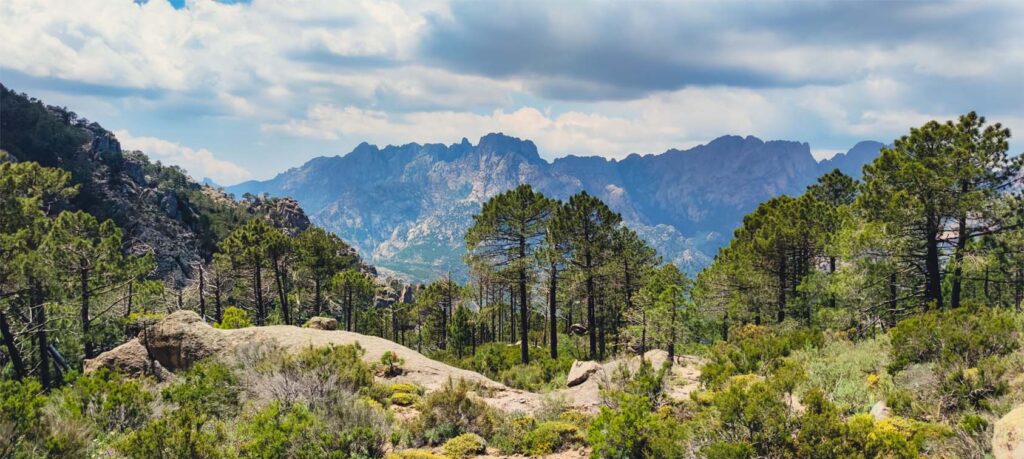
Comparing Upper Corsica and Southern Corsica is like exploring the island’s multifaceted soul, as each region offers its own unique landscapes , traditions, and atmosphere. That said, it’s worth noting that both sides remain incomparably beautiful, captivating, and offer a complete change of scenery: from the rugged coastline of the Balagne to the white cliffs of the South, every traveler can create an itinerary tailored to their own tastes.
nature and local culture firsthand , whether in the eucalyptus forests of the north or on the fine sandy beaches of the south. It’s worth noting that the North/South debate will always be lively: diverse landscapes, a unique welcome, a relaxed lifestyle, and microclimates—Corsica is something to be explored, experienced, and never truly compared to other places. This guide unravels every nuance to help you choose: a holiday, a permanent stay, or simply a visit of curiosity.
Haute-Corse and Corse-du-Sud each captivate with their own rhythm and light . It should be noted that the north, often wilder, offers a rare authenticity: winding roads, high-altitude villages, fragrant maquis, secluded beaches and nearby mountains .
The south, meanwhile, boasts iconic beaches, spectacular cliffs (Bonifacio), lush forests (Bavella), and emblematic seaside resorts. However, the contrast isn’t stark: each “canton” of the island offers the charm of village squares, the conviviality of local markets, and a distinct culture specific to each valley .
Camping experiences vary: on the north side, intimate areas are often preferred , in the heart of the pine forest or near secret coves; on the south side, the trend is towards large, well-equipped campsites with a family and festive atmosphere, but also towards discreet ecotourism around Porto-Vecchio and Bavella .

It must be said that Upper Corsica shines with its diverse landscapes and the immediate sense of disconnection it provides. For example, Cap Corse is a world unto itself, a playground for sailors, hikers and fishermen ; Balagne, the “garden of Corsica”, abounds with charming hilltop villages (Sant’Antonino, Pigna, etc.) and its coastline alternates between pebble and sandy beaches .
The interior, more rugged, promises encounters with a true Corsica , artisanal, warm and proud of its cultural identity.
Furthermore, Southern Corsica stands out as an ode to light and gentleness, without ever losing sight of its commitment to authenticity. The beaches of the Gulf of Ajaccio, the splendor of Palombaggia and Santa Giulia, and the raw power of Bonifacio make it a star destination.
It’s worth noting that in the hinterland, between Alta Rocca , small towns, and farm inns, lie more secluded experiences: wooded trails and quiet villages that delight campers seeking peace . The south charms with its bustling markets, easy access to swimming, and a vibrant summer atmosphere.
It’s worth noting that the Corsican climate varies considerably from one end of the island to the other. The south enjoys a warmer and slightly drier microclimate, ideal for those who love long swims , constant sunshine, and evenings without excessive chill.
That being said, Upper Corsica is not to be outdone : from the eastern plain and the Balagne region, sunshine is almost permanent in the heart of summer, but the nights are often milder, especially inland or at altitude.
Moreover, Cap Corse surprises with its variations : offshore winds , fleeting showers, and numerous light morning mists, all of which lend the landscapes an extra dimension. For those who appreciate the contrast between sun-baked beaches and cool mountains, camping in the north allows you to experience all temperatures – within a few kilometers.
It must be said that the notion of the “best place” to live or stay in Corsica depends above all on one’s desired lifestyle. Those who enjoy a lively atmosphere often gravitate towards Porto-Vecchio , Ajaccio , or Calvi , in the south or north, where nightlife , festivals, and a plethora of sporting activities set the rhythm of the summer.
Those who prefer authenticity will easily choose a hilltop village in Balagne , Cap Corse, or the towns of Alta Rocca, true havens for the year or for quiet holidays.
it comes to camping, the choice will depend on your preferences: families seeking amenities will head to the southern coast; those seeking peace and quiet will prefer the smaller, more intimate campsites in the north , where the friendly owners and the quality of the local produce will be a delightful surprise. Many dream of setting up camp between Saint-Florent and Nonza , or by the sea near Porto-Pollo or Cupabia, equally stunning but less crowded.
As a general guideline, it’s impossible to make an objective judgment. Each region has its own gems, unique landscapes, and traditions. The north captivates with the ruggedness of its headlands, the mosaic of villages , its fierce authenticity, and its remote, end-of-the-world atmosphere. The south remains irresistible for its string of legendary beaches, lush vegetation, the refinement of its small white towns, and the diversity of its terrain .
Moreover: the warm welcome, the pleasure of the table, the desire to share a coffee in the central square , are, from north to south, the true common thread of a stay in Corsica.
To help you refine your choice according to your priorities:
After analyzing these points, it becomes clear that Corsican happiness lies in taking the time to discover all or part of the island, according to one’s desires, seasons, and encounters.
North or south , Corsica is never simply a matter of opposition. It is in the diversity of its landscapes, traditions, accents, and scenery that the true richness of the island lies .
Between family camping in the Balagne pine forest and golden beaches of the far south, village markets and musical evenings, it is the complementarity, the diversity, the Corsican generosity that makes all the difference – and makes you want to come back again and again.